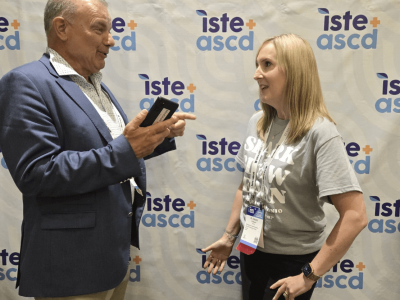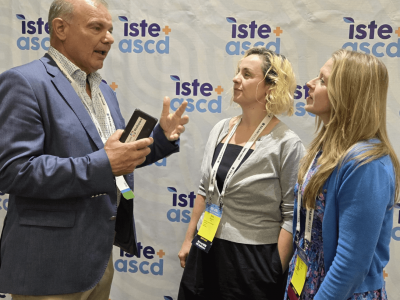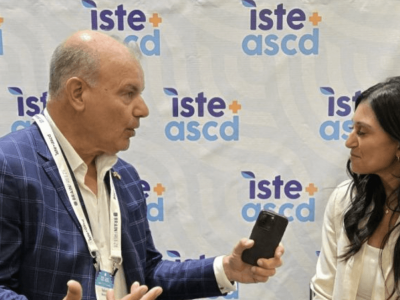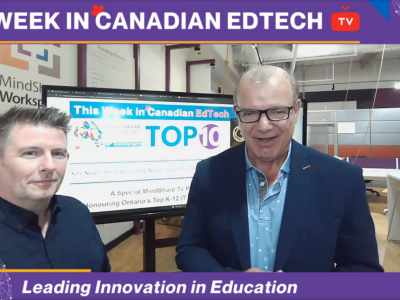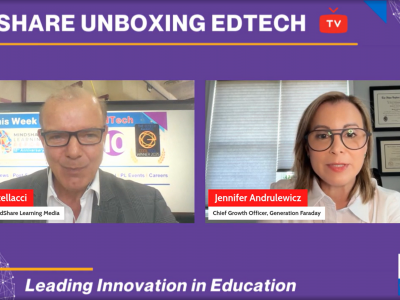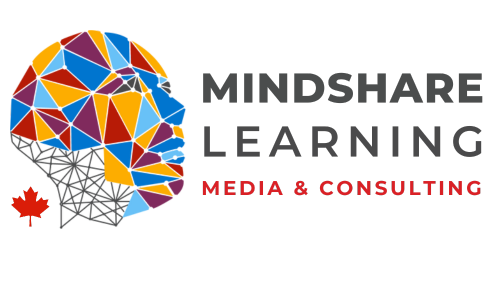By Joseph Romano, M.Ed., TDSB Teacher, MindShare Learning EdCon
Engaging as a part of the International Society for Technology in Education (ISTE) is “a powerful and meaningful way for educators to connect with peers, to gather in a variety of forums to share the challenges and excitement of teaching, and to be part of a community that leads the transformation of education.” After attending the 33rd annual ISTE Conference this past June in San Diego, California, it became clear to me that as a whole, professional development is redefining itself in the face of a revolutionary pedagogical shift.
During the conference, participants from around the world shared in innovative discussions that focused on establishing new and progressive forms of pedagogical practice that sought to break the boundaries established by the conventional schools systems most of us remember, and still work as a part of. In essence, as these educators discussed, shared, and taught one another, what was being formed was a Professional Learning Community (PLC) that was focused, determined, and groundbreaking in developing new formats of professional development, quite possibly without even knowing so. What these teachers were doing was connecting—with each other, with content, with what mattered in terms of developing their own professional practice. This matters today, during the NOW Century, in the world arena where an educator plays many positions in the balance of effective teaching and learning practices, those which should be designed, implemented, and supported through effective and timely professional development networks that span boundaries and reflect the world our schools are embedded within.
To set the context, the contemporary publicly funded classroom has become a static gathering place for students, a learning space where pedagogies developed out of the Industrial Revolution prevail. Students today are now, more than ever, disengaged and disconnected with the teaching strategies and learning outcomes used in these brick-andmortar spaces. Learning is assigned to a place and occurs through a dated, teacher centred, one-way communicative pedagogy that fails to consistently use technological and Web 2.0 resources. We are at a pedagogical tipping point between conventional and innovative pedagogical practice and are in need of a professional development shift towards a digital teaching practice, that supports a digital learning experience, which fosters communication, collaboration, and creation. Today, students interact in the virtual worlds of social networks, massive multiplayer online games, and wikis through the Internet—learning spaces outside of the conventional school environment that redefine teaching, learning, and the class space.
With these interactions, a disconnect is evident. Those places that are associated with learning (public schools in this case) are not tapping the educative potential embedded in a variety of these virtual worlds. This is a concern as many publicly funded classrooms
have not yet made the shift toward developing pedagogies and thus, professional development strategies, that effectively make use of information communication technologies as a medium for sharing in the creation of new information through teaching and learning.
Through emerging PLCs, such as those formed in gatherings like those organized by ISTE, we must provide educators with opportunities to develop the skill sets to design virtual world Web spaces where new learners are given opportunities to use the Internet and Web 2.0 technologies to develop their own learning within parameters set by curricula, success criteria, and/or common learning goals. Here, it is critical that this new PD allow the educator as designer to develop knowledge and enable comfort in online learning space design and delivery platforms and be confident in working with new learners in new multimodal, online, and social media spaces (Cope & Kalantzis, 2010). In these spaces, this new teacher engages with PD as a means of developing the capacity to
take on the role of the facilitator, managing a multifaceted, differentiated, and participatory virtual learning environment for a variety of new learners who are designers of and are engaged in a variety of types of learning.
Professional development as it could emerge today, may be understood as a communal learning experience shared by many where the new teacher employs commonly used Web 2.0 communicative and collaborative networking technologies and the Internet as a mobilizing and engaging agent in the critical exploration and discovery of learning, knowledge, and practice.
